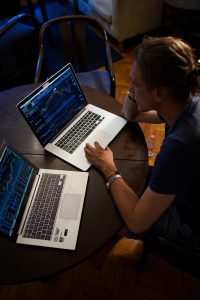Imbalance Forex and Trading Strategies: Techniques for Capitalizing on Market Inequalities
In the world of forex trading, market inequalities or imbalances are opportunities that savvy traders can exploit to their advantage. These imbalances occur when supply and demand do not align, resulting in temporary price discrepancies. By identifying and capitalizing on these imbalances, traders can potentially make profits. In this article, we will explore various techniques and strategies that traders can employ to take advantage of market inequalities.
1. Understanding Imbalances
Before delving into trading strategies, it is crucial to understand what market imbalances are and how they occur. Imbalances can arise due to a variety of factors, such as economic news releases, geopolitical events, or even technical factors like order flow and liquidity. These imbalances can create temporary price disparities, which traders can exploit for profit.
2. Identifying Imbalances
The first step to capitalizing on market inequalities is identifying them. Traders can use various tools and techniques to spot potential imbalances. One popular method is technical analysis, which involves studying price patterns, support and resistance levels, and indicators to identify potential imbalances. Fundamental analysis, on the other hand, focuses on economic data and news events to predict market imbalances. By combining these two approaches, traders can gain a comprehensive understanding of market dynamics.
3. Trading the News
One effective strategy for capitalizing on market imbalances is trading the news. Economic news releases, such as employment data, GDP reports, or central bank announcements, can trigger significant market imbalances. Traders who are quick to react to these events can seize the opportunity to profit from the resulting price movements. However, it is crucial to have a solid understanding of the news and its potential impact on the market to avoid unnecessary risks.
4. Scalping and Day Trading
Scalping and day trading are short-term trading strategies that aim to exploit small price imbalances. Scalpers typically enter and exit trades within minutes, profiting from small price differentials. They rely on technical indicators and order flow analysis to identify quick trading opportunities. Day traders, on the other hand, hold positions for hours, taking advantage of intraday price movements. Both strategies require discipline, quick decision-making, and a thorough understanding of technical analysis.
5. Pair Trading
Pair trading is a strategy that involves trading two correlated instruments simultaneously. Traders identify pairs with a historical correlation and establish positions based on the expectation that the correlation will return to normal. For example, if a trader believes that the correlation between the EUR/USD and GBP/USD pairs has deviated, they can short the overperforming pair and go long on the underperforming pair. This strategy allows traders to profit from market imbalances while minimizing exposure to overall market movements.
6. Arbitrage Trading
Arbitrage trading is another strategy that exploits market inequalities. It involves taking advantage of price discrepancies between different markets or instruments. For example, a trader may notice that the EUR/USD exchange rate on one platform is slightly higher than another. They can simultaneously buy on the lower-priced platform and sell on the higher-priced platform, profiting from the price difference. However, arbitrage opportunities are often short-lived and require advanced technology and fast execution to be successful.
7. Risk Management
Lastly, it is crucial to emphasize the importance of risk management when trading market imbalances. While these strategies have the potential for significant profits, they also carry inherent risks. Traders should always use appropriate position sizing, set stop-loss orders, and be prepared for unexpected market movements. Additionally, continuous learning, practice, and staying updated with market news and developments are essential to successful trading.
In conclusion, market inequalities or imbalances present lucrative opportunities for forex traders. By understanding and identifying these imbalances, implementing appropriate strategies, and managing risks effectively, traders can capitalize on market inequalities and potentially generate substantial profits. However, it is vital to remember that trading is inherently risky, and proper knowledge, experience, and discipline are crucial for long-term success in forex trading.





